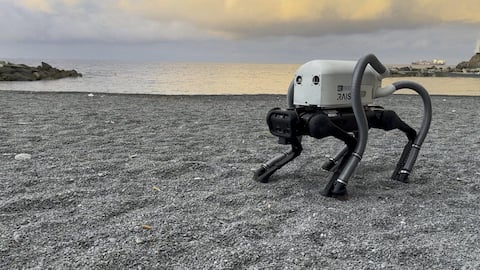This robot dog is tackling the world's second-worst litter problem
What's the story
A quadrupedal robot named VERO, developed by the Dynamic Legged Systems unit at the Italian Institute of Technology (IIT) in Genoa, is tackling cigarette littering. The robot dog, designed in Claudio Semini's lab at IIT, uses foot-mounted vacuums to pick up cigarette butts. This innovative approach addresses the issue of cigarette butt litter, which is the second most common type of litter on Earth.
Litter issue
A novel approach to an environmental problem?
Cigarette butts are a significant environmental issue, with over four trillion of the estimated six trillion smoked each year discarded on the ground. These butts release more than 700 toxic chemicals into the environment, damaging ecosystems and contributing to general unsightliness. The ideal solution would be to prevent improper disposal of these butts, which would require a significant shift in human behavior.
Robotic innovation
Unique design and functionality
VERO, short for Vacuum-cleaner Equipped Robot, is based on an AlienGo from Unitree and features a commercial vacuum mounted on its back. The vacuum hoses lead down to each foot, ending in a custom 3D-printed nozzle designed to maximize suction near the ground without impeding the robot's movement. The robot's unique contribution lies in its ability to autonomously locate items on the ground and plan how to interact with them using its feet.
Efficiency
Autonomous operation and success rate
Once an operator designates an area for VERO to clean, the robot operates independently. It calculates an exploration path to cover the entire area and uses onboard cameras and a neural network to detect cigarette butts. Initial testing showed that VERO could successfully collect just under 90% of cigarette butts in a variety of environments. Despite not being particularly fast, the robot's persistence and energy efficiency make it a valuable asset in the fight against litter.
Future prospects
Potential for versatile applications
The researchers behind VERO believe this is the first time a legged robot has used its legs concurrently for locomotion and another task. This distinguishes VERO from other robots that temporarily repurpose their feet as manipulators. The team suggests that this technology could have numerous other applications, like spraying weeds in crop fields, inspecting infrastructure cracks, and placing rivets or nails during construction. The robot's four feet could potentially host four different tools, with slight modifications to the software.
